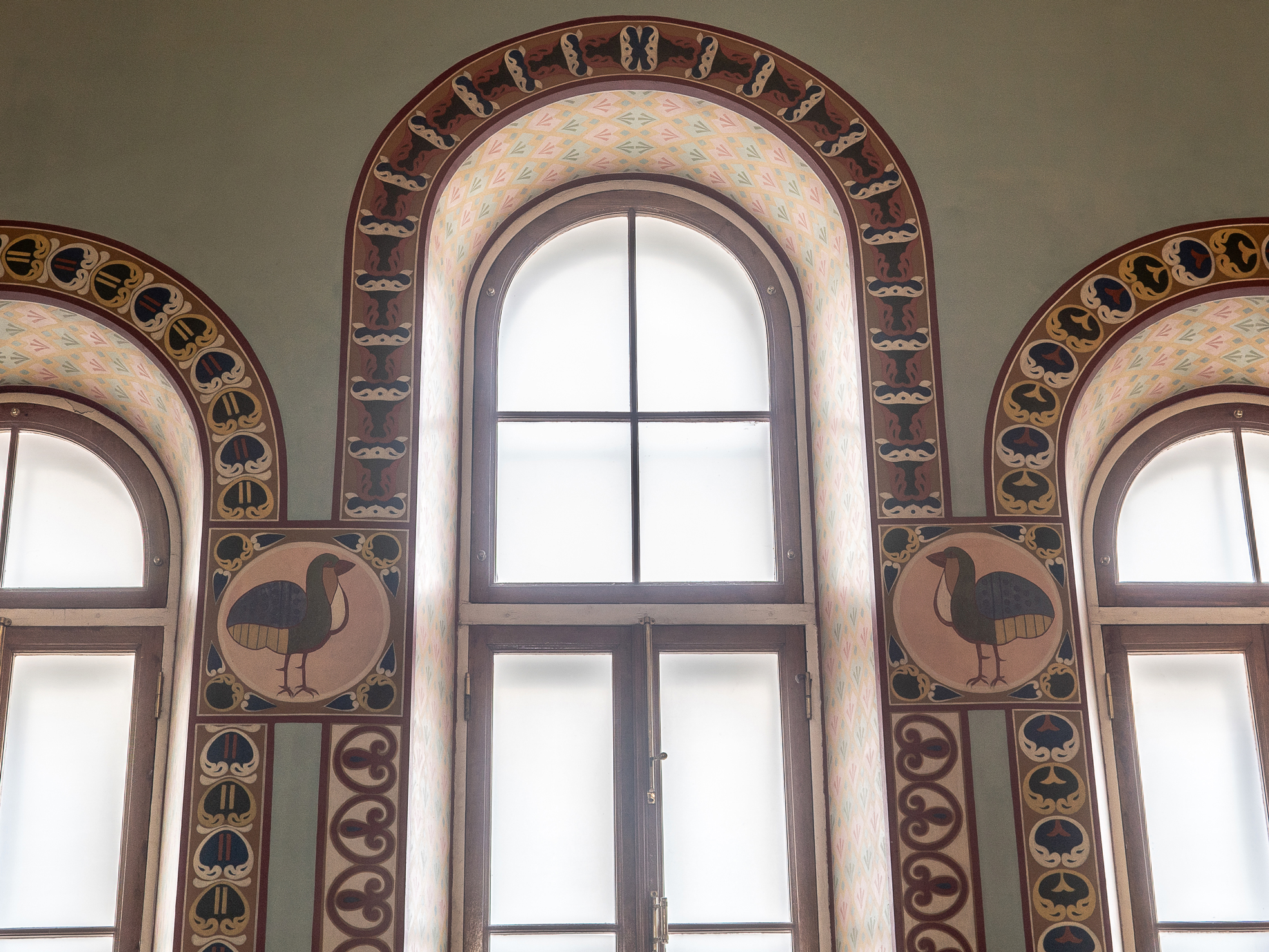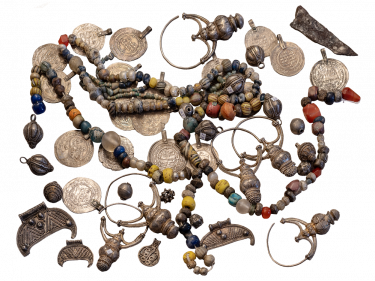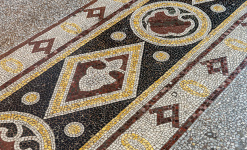The Ancient Russian state formation (9th – early 12th century)












The hall is devoted to the earliest period (9th – beginning of 12th century) of the history of the old Russian state, which emerged over a thousand years ago in the vast expanse of Eastern Europe. Ancient Rus, with its capital in Kiev, occupied the territory where took place important political, cultural and economic contacts of the Orient and the Western Europe, Scandinavia and Byzantium. This had a significant impact on the formation and further development of the state.
The core of the territory of Ancient Rus was “the way from the Varangians to the Greeks " – the most important trade route along the rivers from the Baltic sea to Mediterranean.
The invitation in 862 of a “Varangian Rus” Rurik and his brothers to Novgorod “to reign” traditionally is considered to be the beginning of the ancient Russian state. The most important functions of the Prince were collection and redistribution of tribute, as well as the protection of territories. The Russian Princes relied on a military organization – Drouzhina (the Squad), the core of which consisted of the "Varangians", often called in Russian chronicles "Rus".
In return for paying tribute, the Prince and Drouzhina (the Squad) had protected population from possible external threats – the steppes at the southern limits of the Rus were a constant source of danger.
An important feature of the ancient Russian state was its polyethnic character: it included 22 peoples and tribal entities. The forest zone of the East European plain was inhabited by Balts, Ugro-Finns and Slavs. The Slavic unions of tribes, whose names are known from the historic chronicles, and the original chronicle "The Tale of Bygone Years", listed 14 tribes, that occupied the largest territories. The economy of the Slavs was based on agriculture, although different crafts played an important role in it, some products were exported (honey, wax, fur, etc.).
Contacts with the Byzantine Empire had a great impact on Ancient Rus throughout this period. In 988 happened one of the most significant events in the Russian history – the baptism of Prince Vladimir (978–1015, great-grandson of Rurik, son of Svyatoslav) and his Drouzhina (the Squad) in Greek Korsun’ (Chersonesos). The adoption of Christianity became the starting point for spread of literacy and literature in Russia. Prince Vladimir had started coinage of the first Russian money – Srebrenick – a silver coin and Zlatnik – a golden coin. His son Yaroslav the Wise (1019–1054) had compiled the first written code of law "The Russian Truth", which reached us through subsequent replications. The own coinage and "The Russian Truth" testified completion of creation of the Russian statehood.





















Elements typical for old Russian architecture were used in the design of this hall: vaults; three-part windows; arched doorways. The decoration of the platbands and mosaic marble floors reproduce art ornaments of the headpieces of the oldest Russian books: Ostromir Gospels (1057) and the "Izbornik of Svyatoslav" (1073). On the wall opposite to the entrance is a copy of the painting of the Western tower of St.Sophia Cathedral of Kiev, depicting ancient musicians.
The rectangular hall is covered with a groined vault. Three-part windows with arched copy windows of the Central nave of the Hagia Sophia in Kiev.
The hall is decorated with two paintings, painted specifically for the Historical Museum in 1883 by academician H.I.Siemiradzky: "The funeral of the Rus in Bulgar" and "The Feast of Svyatoslav after the battle of Dorostol in 971". They represent ancient rites of pagan Rus’. Everything depicted on canvas is not simply imagined by the artist, but is based on Arabic and Byzantine written sources.
The first of the painting is based on the "The Notes" of an Arab author of the Xth Century Ahmed Ibn-Fadlan, who travelled in 921 as a Secretary of the Embassy of the Baghdad Caliph to Volga Bulgaria. In the city of Bulgar he witnessed the funeral of a noble warrior-Rus and described in every detail the rite of his funeral.
In the center of the composition is placed a carved rook on the platform. In the aft is a dead warrior. At his feet is a girl ready to follow her master in his afterlife. Behind her is an older woman with a dagger ("The Angel of Death"). At the bottom of the canvas are seen sacrificed animals; the mourners, the old scald and vigilantes with weapons.
H.I.Semiradsky worked on that painting in Rome. In addition to the "The Notes" of Ibn-Fadlan he used sketches of objects found in 1872–1873 by archaeologist D.Ya.Samokvasov in the famous "Black grave" mound in Chernigov.
The plot of the painting "The Feast of Svyatoslav after the battle of Dorostol in 971" is based on the recorded story of the Byzantine historian of the 10th century Leo Deacon about one episode of the war of Prince Svyatoslav with the Byzantine Emperor John Tsimishiy.
In the foreground, H.I.Semiradsky depicted the ritual slaughter of the Greeks at the burial of the Svyatoslav’s warriors killed in action of and the massacre of children torn away from the hands of distraught mothers. The elder priest sanctifies the waters of the Danube, and the warrior throws a rooster into the river. At the top of the canvas is a Kiev Prince Svyatoslav on a white horse, behind him is another scene of brutal execution. On the left, against the background of the ruined fortress Dorostol, are burning funeral pyres.









